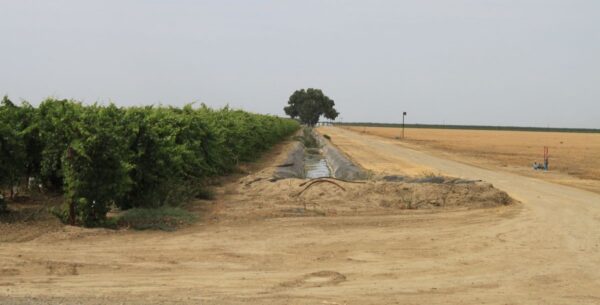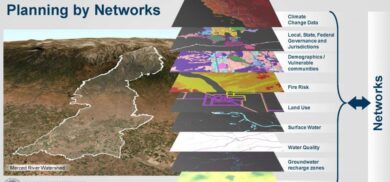
KAMYAR GUIVETCHI: Managing Water Resources for Sustainability & Resilience
 Kamyar Guivetchi is the Manager of DWR’s Division of Planning, where he works with staff, numerous government agencies, California Native American tribes, other stakeholders, and the public to prepare the California Water plan updates. At the UC Davis Groundwater SAS Symposium, Mr. Guivetchi gave a keynote address focusing on the need to build watershed resilience by increasing integration among agencies with responsibilities for water resources. He also touched on the Newsom administration’s water initiatives, the update to the California Water Plan, and Flood-MAR.
Kamyar Guivetchi is the Manager of DWR’s Division of Planning, where he works with staff, numerous government agencies, California Native American tribes, other stakeholders, and the public to prepare the California Water plan updates. At the UC Davis Groundwater SAS Symposium, Mr. Guivetchi gave a keynote address focusing on the need to build watershed resilience by increasing integration among agencies with responsibilities for water resources. He also touched on the Newsom administration’s water initiatives, the update to the California Water Plan, and Flood-MAR.
Mr. Guivetchi began by noting that context is really important when discussing water in California. California is a big state with ten hydrologic regions, each the size of other states.
“If California were the size of Connecticut, we would have an entirely different way of thinking about water,” he said. “So the size and diversity of our hydrologic regions mean there are no cookie-cutter solutions. We really have to work at the watershed scale and customize what needs to be done.”
Click here to continue reading this article at Maven’s Notebook.
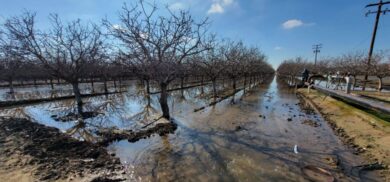
Model Partnership Brings Ag Reuse and Groundwater Sustainability to the San Joaquin Valley
Written by Jennifer West, Managing Director of WateReuse California
 As the impacts of California’s ongoing drought collide with new groundwater requirements, growers and cities in the San Joaquin Valley are scrambling to find sustainable water supply solutions.
As the impacts of California’s ongoing drought collide with new groundwater requirements, growers and cities in the San Joaquin Valley are scrambling to find sustainable water supply solutions.
But before the current crisis, Tulare Irrigation District (TID) and the City of Visalia (City) developed a model exchange program that brings as much as 11,000 acre feet a year of highly treated recycled water to growers while providing the City with surface water used for groundwater replenishment.
“The partnership has value beyond the water. We enjoy working with the City of Visalia. We consider them our neighbors, our partners, our friends. And we are lock step in developing sustainability for groundwater,” said Aaron Fukuda, General Manager of TID.
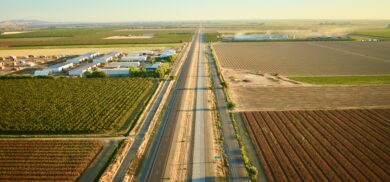
SGMA in the News
Can California’s floods help recharge depleted groundwater supplies?

“The drenching storms that hit California in recent weeks represented a long-sought opportunity for Helen Dahlke, a groundwater hydrologist at the University of California, Davis. Dahlke has been studying ways to recharge the state’s severely depleted groundwater by diverting swollen rivers into orchards and fields and letting the water seep deep into aquifers. But carrying out such plans requires heavy precipitation—which had been scarce. This week, however, water managers began to turn theory into practice. … ” Read more at Science Magazine.
Ground zero: Rain brings little relief to California’s depleted groundwater
“The powerful storms that clobbered California for weeks in December and January dropped trillions of gallons of water, flooding many communities and farms. But throughout the state, the rains have done little to nourish the underground supplies that are critical sources of California’s drinking water. Thousands of people in the San Joaquin Valley have seen their wells go dry after years of prolonged drought and overpumping of aquifers. And a two-week deluge — or even a wet winter — will not bring them relief. Even in January, as California’s rivers flooded thousands of acres, state officials received reports of more than 30 well outages, adding to more than 5,000 dry residential wells reported statewide in the past decade. … ” Read more at Cal Matters.
Can nine atmospheric rivers recharge California’s groundwater?
“In the wake of last month’s storms, many people are wondering if we’re socking away any of that bounty for a drought-y day. We asked UC Davis groundwater hydrologist Helen Dahlke, a member of PPIC Water Policy Center’s research network, to give us the skinny. Q: How have the recent rains impacted groundwater recharge efforts in California? A: I’m definitely glad for the nine atmospheric rivers that came through! I wish they could have been spaced out a little bit, but they filled up reservoirs and moistened soils that were dry from three years of drought. In Northern California, we’re still below our typical annual precipitation; we’re at just 40% of what we got in 2017, which was an exceptionally wet year. In Southern California, we’ve exceeded the typical yearly amount. … ” Read more at the PPIC.
PPIC Policy Brief: The future of agriculture in the San Joaquin Valley
 “Agriculture in the San Joaquin Valley is a key driver of the regional economy and an important contributor to the nation’s food supply—but it faces a future with less water for irrigation. By 2040, average annual water supplies could decline by 20 percent, constrained chiefly by the transition to groundwater sustainability under the Sustainable Groundwater Management Act, but exacerbated by climate change and increased environmental regulations. Improving trading rules, water infrastructure, and groundwater recharge could lower the cost of adapting to the coming changes. Incentivizing alternative uses for irrigated lands could bring additional income to farmers and local communities, while improving public health and environmental outcomes on fallowed lands. … ” Read more at the PPIC.
“Agriculture in the San Joaquin Valley is a key driver of the regional economy and an important contributor to the nation’s food supply—but it faces a future with less water for irrigation. By 2040, average annual water supplies could decline by 20 percent, constrained chiefly by the transition to groundwater sustainability under the Sustainable Groundwater Management Act, but exacerbated by climate change and increased environmental regulations. Improving trading rules, water infrastructure, and groundwater recharge could lower the cost of adapting to the coming changes. Incentivizing alternative uses for irrigated lands could bring additional income to farmers and local communities, while improving public health and environmental outcomes on fallowed lands. … ” Read more at the PPIC.
“So much at stake”: Sustainable Conservation’s water team on opportunities, hopes for the future
“It’s been a tumultuous (and wet!) start to 2023, with California weathering an extraordinary level of rain and snow over the past few weeks. Opportunities abound, but a storm-barraged populace’s frustrations and hazards are clear. Our hearts go out to those that have been impacted by these recent atmospheric events, and we appreciate the chance to center flood risk and community safety in the larger conversations about drought and water security. We checked in with our Water for the Future team to get a window into our upcoming work, what’s on their minds when it comes to California weather extremes, and their hopes for the future. … ” Read more at Sustainable Conservation.
DWR Approves Groundwater Sustainability Plans for Four Northern California Basins
“The Department of Water Resources (DWR) announced today the approval of groundwater sustainability plans for four groundwater basins – Napa Valley Subbasin in Napa County, as well as Santa Rosa Plain Subbasin, Petaluma Valley Basin, and Sonoma Valley Subbasin in Sonoma County. … ” Read more at DWR News.
Sonoma County: Construction of nine new groundwater monitoring wells complete
“A big challenge with managing groundwater is that it’s invisible to the human eye. Unlike surface water in lakes and rivers, we can’t actually see groundwater levels rise and fall. That’s why monitoring wells are so important: These wells are drilled for the sole purpose of “showing” us what’s happening in local aquifers. Through three Proposition 68 grants funded by the California Department of Water Resources (DWR), nine new multilevel groundwater monitoring wells (GMWs) were recently constructed by the Sonoma Valley, Petaluma Valley, and Santa Rosa Plain Groundwater Sustainability Agencies. Sonoma Water oversaw the construction of the wells, which expanded the monitoring networks of the Sonoma Valley and Santa Rosa Plain Subbasins and the Petaluma Valley Groundwater Basin. ... ” Read more at the Sonoma Valley GSA.
Sonoma County: Sangiacomo family vineyard: Growing premium grapes with less water
““Water isn’t as plentiful as it once was,” noted Mike Sangiacomo referring to his family’s 1,600 acres of vineyards, first established one hundred years ago by his grandfather in Sonoma Valley. “But we have learned to use water as efficiently as possible.” Mike Sangiacomo grew up working on his family’s farm, and along with his brother and sister is a partner of Sangiacomo Family Vineyards. Growing premium quality pinot noir and chardonnay grapes through years of drought has required constant monitoring of environmental conditions. Each year Mike has learned more about how to maintain the health of the plants while using water efficiently. New technologies for forecasting weather and for measuring moisture in the ground and the air have been essential during this prolonged drought. Mike says they are always willing to try a new tool or application to see if it can help save water. “At this point I feel like it’s getting harder to improve on what we’re already doing. What we’ve learned over the years is that you can do more with less.” … ” Read more at the Sonoma County GSA
Napa Valley Grapegrowers Report: Investing in the aquifer
“In recent years, there has been a surge in awareness and interest around sustainability and land stewardship across California farming communities — and not only among agricultural producers. The benefits of farmland preservation and regenerative farming practices have captured the interest of a much larger audience that sees that a farmer’s work can benefit the community as much as the farm itself. This is true in Napa County, where growers are increasingly taking action and demonstrating that returns on environmentally conscience investments in the vineyard can be land-smart, economically beneficial and provide ecosystem services to the collective community. … ” Read more at the Napa Valley Register.
Madera Co. ditches plan to tinker with groundwater penalties
“Madera County is keeping its recently approved current structure for penalizing farmers who blow past their water allocation, forgoing an option to implement a tiered penalty structure. The decision came during Tuesday’s Madera County Board of Supervisors meeting and maintains the status quo for the Chowchilla, Delta-Mendota and Madera Subbasins. The backstory: Last September, the Board adopted a new penalty structure for water overdrafts, setting the 2023 fine at $100 per acre-foot in excess of the allotted amount. The penalty would increase by $100 per year and cap out at $500 in 2027 and beyond. ... ” Read more at the San Joaquin Valley Sun.
San Luis Obispo County supervisors move to change new rules giving more water to Paso Robles farmers
 “The San Luis Obispo County Board of Supervisors took steps Sunday to dismantle the county’s new planting ordinance, which allows farmers in the Paso Basin Land Use Management Area to use more water to irrigate their crops. On Sunday, the board voted 3-1 to put the ordinance on the Feb. 7 meeting agenda — when supervisors will vote on whether to repeal it. Supervisor Debbie Arnold missed the meeting; she did not give a public reason for her absence. Sunday’s vote came less than two months after a previous iteration of the board passed the new water rules. … ” Read more at the San Luis Obispo Tribune.
“The San Luis Obispo County Board of Supervisors took steps Sunday to dismantle the county’s new planting ordinance, which allows farmers in the Paso Basin Land Use Management Area to use more water to irrigate their crops. On Sunday, the board voted 3-1 to put the ordinance on the Feb. 7 meeting agenda — when supervisors will vote on whether to repeal it. Supervisor Debbie Arnold missed the meeting; she did not give a public reason for her absence. Sunday’s vote came less than two months after a previous iteration of the board passed the new water rules. … ” Read more at the San Luis Obispo Tribune.
Supervisors rescind newly approved Paso basin planting ordinance
“Nearly two months after its initial approval, the San Luis Obispo County Board of Supervisors voted to rescind the Paso Basin Land Use Management Area Planting Ordinance during a special meeting held on Sunday, Jan. 29. The ordinance, passed in December 2022, came as an update to the original ordinance adopted in 2015. The new ordinance would limit farmers to 25 acre-feet per year (AFY) for the next 22 years and allow new irrigated crops to be planted. However, the ordinance came with several regulations unrelated to water itself, including regulations on dust control. Any farmer or rancher in the Paso Basin who rotates to a different irrigated crop each year/season will be subject to the new ordinance. But, any same crop and acreage that has been in production within six years preceding March 1, 2023, would be exempted. … ” Read more at the Paso Robles Daily Press.
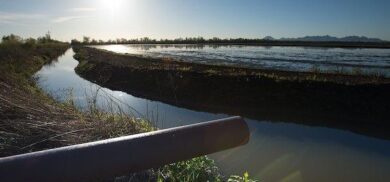
NGOs release evaluation of DWR’s determinations on 2020 Groundwater Sustainability Plans in Critically Overdrafted Basins
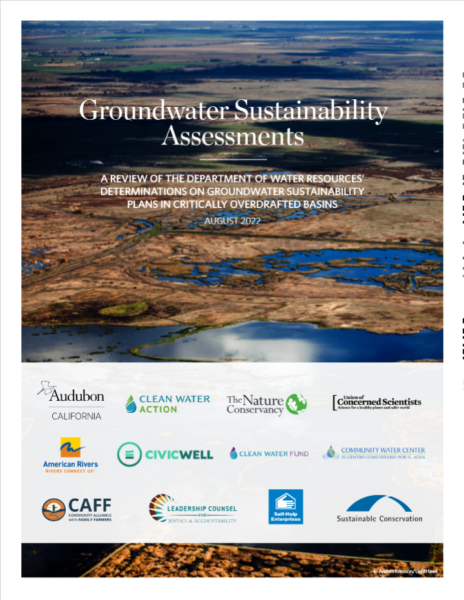 From the Groundwater Leadership Forum:
From the Groundwater Leadership Forum:
“Of the 46 GSPs submitted in January 2020, the Department of Water Resources (DWR) determined eight GSPs to be adequate and 34 GSPs to be incomplete.
In this paper we evaluate to what extent DWR’s determinations provide oversight on the key issues of drinking water, disadvantaged communities, the environment, stakeholder involvement, and climate change. We summarize the corrective actions that DWR is recommending or requiring, as well as compare DWR’s determinations to the assessment of 31 GSPs that we conducted in 2020.
We also reviewed the 11 comment letters submitted by the State Water Resources Control Board (SWRCB), 25 comment letters submitted by the California Department of Fish and Wildlife (CDFW), and seven comment letters submitted by the National Oceanic and Atmospheric Administration’s National Marine Fisheries Service (NMFS) to compare deficiencies identified in GSPs across agencies.”
Read the report at the Groundwater Exchange here: Groundwater sustainability assessments: A review of DWR’s determinations on groundwater sustainability plans in critically overdrafted basins
RELATED: California can’t waver on water regulation, commentary at Cal Matters
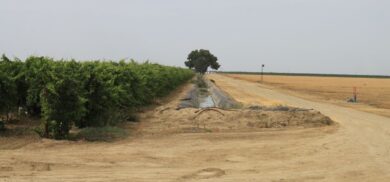
Rewilding California farms: grants going out to repurpose drought-parched Central Valley land
“A withered cornstalk may become the near-future snapshot of some farms in the drought-stricken Central Valley, while also allowing the return of a native landscape that will help conserve the state’s water. The Federal Central Valley Project is not expected to send any water to most farmers who work the fields as California enters a third year of drought.
“I always say we’re a poster child for this issue, because we’re not doing it right,” said Mike Hagman, executive director of the Lindmore Irrigation District, located in the Tulare County city of Lindsay. … Hagman owns 160 acres of now-fallowed agricultural land. But now there is some hope. His land and others may find a new life under an innovative $50 million California project. … ”
Read more from CBS 5 here: Rewilding California farms: grants going out to repurpose drought-parched Central Valley land
SEE ALSO: Some California farmland being restored to natural state in hopes of lessening drought effects, from CBS News

Using seismology for groundwater management
From MIT:
As climate change increases the number of extreme weather events, such as megadroughts, groundwater management is key for sustaining water supply. But current groundwater monitoring tools are either costly or insufficient for deeper aquifers, limiting our ability to monitor and practice sustainable management in populated areas.
Now, a new paper published in Nature Communications bridges seismology and hydrology with a pilot application that uses seismometers as a cost-effective way to monitor and map groundwater fluctuations.
“Our measurements are independent from and complementary to traditional observations,” says Shujuan Mao PhD ’21, lead author on the paper. “It provides a new way to dictate groundwater management and evaluate the impact of human activity on shaping underground hydrologic systems.”

SGMA in the News
Drought conditions static in California as state’s reliance on groundwater grows
“Nearly 17% of the state remains in exceptional drought conditions with the majority being in the San Joaquin Valley. The weekly drought monitor showed no changes to conditions in California. The past month’s monsoonal moisture improved conditions in portions of the Sierra Nevada and desert regions, but the majority of the state slipped further into drought. As the drought drags into its third year, many look to reservoir and river levels to gauge the severity of the drought. However, California’s groundwater, our water “bank account,” is the true measure of water security in California according to supervisory hydrologist Claudia Faunt of the United States Geological Service. … ” Read more from Channel 10 here: Drought conditions static in California as state’s reliance on groundwater grows
California’s groundwater problems, explained | Q&A
“Drought in California means much more than rain and snow falling from the sky, or even reservoir levels. When reservoirs and surface water levels are low, the Central Valley turns to pumping water out of the ground to support its cities and agricultural industry. ABC10 spoke with Claudia Faunt, supervisory hydrologist for the United States Geological Survey, about the drought and it’s effects on groundwater availability, subsidence and water infrastructure. … ” Continue reading at ABC 10 here: California’s groundwater problems, explained | Q&A
Friends of the Eel River plans to sue county, says groundwater pumping harms fish ecosystem
“Friends of the Eel River, a Eureka-based citizens’ group dedicated to protecting and restoring Eel River fisheries, has sent a formal letter to Humboldt County demanding it move to protect fisheries and other public trust values in the lower Eel River from groundwater pumping that lowers surface flows in the river. “Humboldt County’s recently submitted Groundwater Sustainability Plan appears to be an attempt to prevent regulation of groundwater pumping in the lower river, at the expense of Eel River fish,” said Friends of the Eel River Executive Director Alicia Hamann. “But the county’s own data shows well pumping is pulling water out of the Eel River’s flows. In dry, hot years like those we’ve been seeing recently and expect to continue, groundwater pumping in the lower Eel River basin is reducing surface flows, and even leading to the lower river entirely disconnecting.” … ” Read more from the Lost Coast Outpost here: Friends of the Eel River plans to sue county, says groundwater pumping harms fish ecosystem
Butte County sees 11 new dry wells reported in past month
“As summer begins to wind down, the dry weather that has plagued California this year continues, leading to a number of new drought-related issues. Over the course of the past 30 days, 11 new dry well reports in Butte County have been sent to the California Department of Water Resources. That comes out to 39 in the past year and 98 total. Additionally, Glenn County has seen 105 total dry well reports and Tehama County has reported 229, according to data from DWR. … ” Read more from the Chico Enterprise-Record here: Butte County sees 11 new dry wells reported in past month | Read via the Mercury News
Sonoma County Board of Supervisors calls for more study of revised well rules
“The Sonoma County Board of Supervisors put off adopting changes to the county’s well regulations on Tuesday, citing the need for additional analysis and more public outreach. County planning staff presented supervisors with revisions aimed at bringing the county’s well ordinance in line with California’s Public Trust Doctrine, a legal policy mandating local government protect certain waterways for public uses, including commerce, recreation, navigation and habitat. … ” Read more from the Santa Rosa Press Democrat here: Sonoma County Board of Supervisors calls for more study of revised well rules
Enviros suing SONOMA county; say mismanagement is draining Russian River basin
“A revised county plan, adding additional reviews, water meters and other restrictions on new water wells in unincorporated Sonoma County…isn’t enough to stave off a looming lawsuit. The suit accuses local officials of hurting protected species by pulling too much water from local watersheds. After the environmental group California Coastkeeper Alliance signaled they would not drop their lawsuit, county staffers moved quickly to revise proposed changes to the county’s well ordinance. While officials are set to debate the provisions Tuesday, the organization has already reached a verdict. Drev Hunt is legal director of the Coastkeeper Alliance. “The county’s proposal to adopt this ordinance is a partial solution, but it doesn’t go far enough.” … ” Read more from Northern California Public Media here: Enviros suing county; say mismanagement is draining Russian River basin
Salinas: Pumping of the deep aquifer, which holds ancient water, has intensified in recent years. And it’s bad.
 “What if the water coming out of your tap, or the water irrigating the produce you eat, was mined from an ancient water source from when woolly mammoths used to walk the Earth? Is that sustainable? The latter is a question facing the Salinas Valley Basin Groundwater Sustainability Agency’s board on Thursday, Aug. 11, when they will be presented with the most comprehensive study of that ancient water source in at least 20 years, and maybe ever. It’s a draft, not yet finalized, but it’s fair to say it doesn’t look good. The stakes are high: Residents in Salinas, Marina, Castroville and parts of Seaside, as well as various agricultural interests, depend on it. … ” Read more from Monterey Weekly here: Pumping of the deep aquifer, which holds ancient water, has intensified in recent years. And it’s bad.
“What if the water coming out of your tap, or the water irrigating the produce you eat, was mined from an ancient water source from when woolly mammoths used to walk the Earth? Is that sustainable? The latter is a question facing the Salinas Valley Basin Groundwater Sustainability Agency’s board on Thursday, Aug. 11, when they will be presented with the most comprehensive study of that ancient water source in at least 20 years, and maybe ever. It’s a draft, not yet finalized, but it’s fair to say it doesn’t look good. The stakes are high: Residents in Salinas, Marina, Castroville and parts of Seaside, as well as various agricultural interests, depend on it. … ” Read more from Monterey Weekly here: Pumping of the deep aquifer, which holds ancient water, has intensified in recent years. And it’s bad.
Paso basin continues decline as officials seek real-time well monitoring
“The Paso Robles Groundwater Basin lost another 81,800 acre feet (AF) of water storage this spring compared to last spring—the fourth consecutive recorded decline in aquifer levels since 2020 and a continued sign of drought and overpumping, according to SLO County Groundwater Sustainability Director Blaine Reely. “We’re pumping more groundwater, significantly more groundwater, out of the basin, especially in these drought years, than is being recharged,” Reely told New Times. The spring-over-spring snapshot is a first for SLO County, which typically does its Paso groundwater measurements in the fall of each year. … ” Read more from New Times SLO here: Paso basin continues decline as officials seek real-time well monitoring
How a Madera farmer fought a new groundwater fee — and (sort of) won
“A proposed fee system to manage irrigated land in Madera County has sparked a successful protest, leaving one groundwater agency unfunded and at least one farmer claiming the process was done with minimal notice. Officials with Madera County added fees to irrigated acreage commonly referred to as white areas — having no surface water access and not belonging to an irrigation district. Three newly formed groundwater sustainable agencies — Chowchilla Subbasin, the Madera Subbasin and the Delta Mendota Subbasin — are left with no funding for four ongoing groundwater projects required under California’s Sustainable Groundwater Management Act. It’s the County of Madera that oversees the land, said Stephanie Anagnason, director of water and natural resources for Madera County. ... ” Read more from The Business Journal here: How a Madera farmer fought a new groundwater fee — and (sort of) won
Will Kings County be the first region sent to state’s groundwater “cop”?
 “The prospect of being sent to California’s “groundwater cop” strikes dread in the hearts of most water managers. But for John Vidovich, having the Tulare Lake subbasin come under the glare of the State Water Resources Control Board may be the only way to end an irrigation practice by the J.G. Boswell Company that he says is wasteful, abusive and contributing to the sinking of an entire town. Boswell, which has not responded to requests for comment, pumps large amounts of groundwater into massive shallow ponds for later irrigation, something Vidovich, who runs Sandridge Partners, has complained about for years. “I think this practice is going to be referred to the state Water Board,” Vidovich said in a recent interview. “I’m assuming this practice will be the focus of the state water board. … ” Read more from SJV Water here: Will Kings County be the first region sent to state’s groundwater “cop”?
“The prospect of being sent to California’s “groundwater cop” strikes dread in the hearts of most water managers. But for John Vidovich, having the Tulare Lake subbasin come under the glare of the State Water Resources Control Board may be the only way to end an irrigation practice by the J.G. Boswell Company that he says is wasteful, abusive and contributing to the sinking of an entire town. Boswell, which has not responded to requests for comment, pumps large amounts of groundwater into massive shallow ponds for later irrigation, something Vidovich, who runs Sandridge Partners, has complained about for years. “I think this practice is going to be referred to the state Water Board,” Vidovich said in a recent interview. “I’m assuming this practice will be the focus of the state water board. … ” Read more from SJV Water here: Will Kings County be the first region sent to state’s groundwater “cop”?
Central Valley subsidence could last longer than expected
“California’s Central Valley could not have become one of the world’s most productive areas of farmland without its significant groundwater supplies. Until the development of the major state and federal water projects that began delivering surface water to the area in the second half of the 20th century, the Central Valley relied almost exclusively on groundwater. … Heavy pumping of groundwater has led to significant land subsidence throughout the valley, causing major damage in some areas to canals, aqueducts, and other infrastructure. Efforts to limit subsidence in the San Joaquin Valley have sought mainly to stabilize existing groundwater levels, on the assumption that preventing further declines in area aquifers would keep subsidence in check. However, recently published research has found that past groundwater withdrawals are likely to continue to cause continued subsidence well into the future, unless hydraulic head is allowed to recover in the affected aquifers. ... ” Continue reading at the Civil Engineering Source here: Central Valley subsidence could last longer than expected
New recharge basin increases Fresno Irrigation District’s storage capacity
“We may be dealing with a third year of drought, but at some point, we will experience a wet year again. When that happens, the Fresno Irrigation District will be in a better position to collect flood runoff. The state is urging water agencies to develop more groundwater basins to capture floodwater when heavy rains finally return. The Fresno Irrigation District’s newest one has been put to immediate use. The Savory Groundwater Recharge Basin at Chestnut and Lincoln is already storing water. … ” Read more from Channel 30 here: New recharge basin increases Fresno Irrigation District’s storage capacity
Tehachapi: Banked groundwater: how much is enough?
“How much water has the Tehachapi-Cummings County Water District banked underground in the Cummings and Tehachapi basins? And should the board of directors set a limit for future extractions? These are among questions explored by the board in recent meetings and after further discussion at a board meeting Aug. 17, General Manager Tom Neisler was directed to bring a proposal for safeguarding banked water supplies to the board’s next regular meeting. The meeting is set for 3 p.m. on Wednesday, Sept. 21. … ” Read more from the Tehachapi News here: Tehachapi: Banked groundwater: how much is enough?
Ojai: Water lawsuit parties say they need more time
“Major parties in a water lawsuit involving thousands of Ojai Valley property owners say they need more time to complete ongoing mediation talks. During an Aug. 25 status conference in the Ventura River Watershed Adjudication case, attorney Shawn Hagerty, representing the city of Ventura, said the parties are “working hard” and “making progress,” but there’s still “a lot of work to be done.” “It is almost certain that if we want to complete this process, and complete it successfully, we will need more time,” Hagerty told Los Angeles County Superior Court Judge William F. Highberger. … ” Read more from the Ojai Valley News here: Ojai: Water lawsuit parties say they need more time
Ridgecrest: Indian Wells Valley Groundwater Authority spending $6.4M for rights to 750 acre-feet of imported water
“The Indian Wells Valley Groundwater Authority has signed an agreement to spend $6,396,000 to buy the rights to 750 acre-feet of state water per year to import from southwestern Kings County. A nonbinding letter of intent signed Tuesday and obtained by the Daily Independent lays out the terms between the IWVGA and an entity called Utica LJL, LLC to purchase water assets. Utica LJL is in the early stages of developing a site along Interstate 5 about four miles south of Kettleman City to build gas stations, restaurants, motels, an industrial park, and farmland. ... ” Read more from the Ridgecrest Independent here: Ridgecrest: IWVGA spending $6.4M for rights to 750 acre-feet of imported water
Indian Wells Valley Groundwater Authority’s recent water purchase agreement doesn’t mean what they say it means
“The Indian Wells Valley Groundwater Authority (GA) recently announced they had signed a “letter of Intent” (LOI) to purchase approximately 750-acre feet (AF) of state water from the California Aqueduct from Jackson Ranch, a fully entitled, master planned development in Kings County. The water would be imported to the Indian Wells Valley and sold to residents and businesses, but only after costly pipeline infrastructure is permitted and constructed. To be clear, a LOI is not a binding legal document. On the contrary, a LOI simply states the parties have reached an agreement on basic terms. A future document, usually a ‘Purchase and Sale Agreement,’ spells out terms and conditions, and once signed, makes the agreement legally binding on both parties. The thing is, the LOI was not signed by any of the members of the current owners of Jackson Ranch, but by Jon Lash whose entity – reportedly Utica J.L.J. LLC – has an option to buy a portion of the Jackson Ranch. This option has not yet been exercised and expires November 20, 2022. … ” Continue reading from Mojave Pistachios here: Indian Wells Valley Groundwater Authority’s recent water purchase agreement doesn’t mean what they say it means
Groundwater Authority awards contract for monitoring well project between Rose Valley and Indian Wells Valley
“At their regular board meeting on August 10, the Indian Wells Valley Groundwater Authority unanimously agreed to authorize IWVGA to award a contract for drilling services to install monitoring wells from the Rose Valley area into the Indian Wells Valley. The contract goes to Garrison Brothers Well Service, a Ridgecrest-based company. The estimated budget for the contract is $220,360, which falls within the expected budget for the project according to Jeff Helsley of Stetson Engineers, which is the company functioning as IWVGA’s water resources manager. … ” Read more from the Ridgecrest Independent here: Groundwater Authority awards contract for monitoring well project between Rose Valley and Indian Wells Valley
Antelope Valley water contractors will explore recharge options
“The Antelope Valley State Water Contractors Association agreed, on Thursday, to pursue two parallel options for recharging the underlying aquifer with surplus water from the State Water Project in and adjacent to Big Rock Creek, in the southeastern part of the Valley. A pilot study of the original plan — to recharge water directly into the aquifer through the creek bed — conducted in 2019-2020 proved to be infeasible, as the ground did not absorb the water fast enough to prevent it from spilling downstream, where it crossed and flooded East Avenue T. Instead, the Association is looking at either using culverts beneath avenues T and S to direct the water without flooding the roads, or to pipe water into recharge basins east of the creek bed. … ” Read more from the Antelope Valley Press here: Antelope Valley water contractors will explore recharge options
SoCal water agencies celebrate more than five decades of successful groundwater management
“As California experiences another year of drought and extreme heat, residents and businesses may be asking how their communities ensure they have enough water for today and into the future. For two inland Southern California water agencies, responsible groundwater management is a piece of the puzzle. On August 1, 2022, the 51st annual watermaster report was filed with the Court, crossing a significant milestone in this effective working relationship between Western Municipal Water District (Western) and the San Bernardino Valley Municipal Water District (Valley District). The Court appointed the two agencies a shared role of Watermaster following a legal settlement of water rights in 1969. Western represents the Riverside County entities and Valley District represents the San Bernardino County entities who pump water from these basins. … ” Read more from Western Municipal Water District here: SoCal water agencies celebrate more than five decades of successful groundwater management
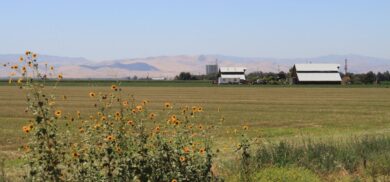
PPIC: Is SGMA Compatible with Farmland Preservation?
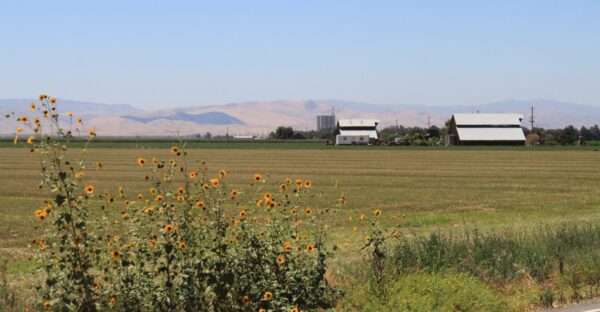 From the Public Policy Institute of California:
From the Public Policy Institute of California:
As implementation of the Sustainable Groundwater Management Act (SGMA) gets underway, questions are emerging about what it will mean for lands protected under the Williamson Act, California’s chief farmland preservation policy. For nearly 60 years, the Williamson Act has helped protect 16 million acres—roughly half of the state’s crop- and rangelands—from development.
But as SGMA’s limitations on groundwater extraction go into effect—and as warmer, more intense droughts begin to push land out of irrigation–the context within which the program operates is shifting. In July, we gathered a group of agriculture, solar, and county stakeholders to explore the interplay between the Williamson Act and SGMA in the San Joaquin Valley. Here is what we learned.
Click here to read more from the Public Policy Institute of California.
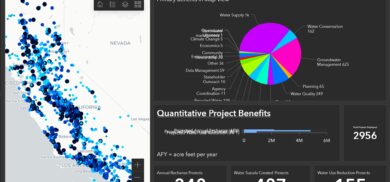
DWR Launches New Web-Based Mapping Tool Showing Nearly 3,000 Groundwater Sustainability Projects
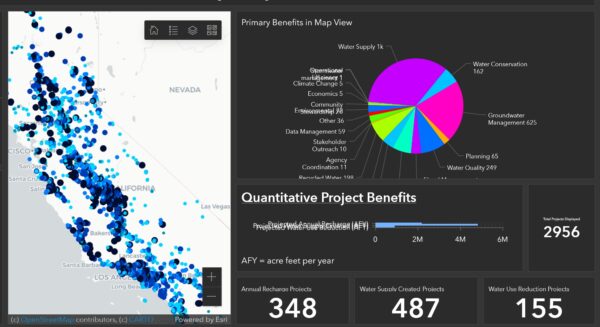 From the Department of Water Resources:
From the Department of Water Resources:
A new web-based tool developed by the Department of Water Resources (DWR) will allow the public to explore thousands of groundwater projects across California to get a better understanding of one of the state’s most critical water supply resources. The virtual mapping tool is part of the State’s ongoing commitment to develop new, innovative solutions to provide information and resources to address the effects of California’s changing climate and ongoing severe drought.
The California Groundwater Projects Tool is an interactive mapping tool that allows users to explore a database of nearly 3,000 projects initiated in California over the last decade to protect groundwater resources. The mapping tool features projects that were funded by DWR and external sources such as federal or local funding. The database will include information about project benefits and effectiveness in relation to the Sustainable Groundwater Management Act (SGMA). Users can also access more than 20 project case studies and get guidance on how to measure and track benefits of projects following construction.
Continue reading from the Department of Water Resources by clicking here.
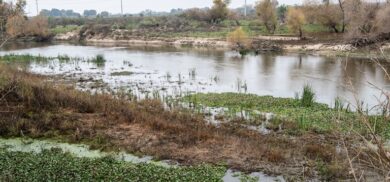
DWR: Going with the Flow: How Aquifer Recharge Reduces Flood Risk
 From the Department of Water Resources:
From the Department of Water Resources:
On a small scale, aquifers — subsurface natural basins — have benefitted from man-made recharge for decades. Now, a new Department of Water Resources (DWR) assessment shows how Flood Managed Aquifer Recharge, or Flood-MAR, can help reduce flood risk and boost groundwater supplies across large areas of land.
A climate change problem solver, Flood-MAR collects high flow flood waters from heavy precipitation or snow melt and conveys it downstream. There, the flood waters are spread across the land, creating wetland habitat or irrigating fields while also percolating to aquifers underground. The capturing of flood waters during times of peak flows lessens the risk of major flooding during heavy storms. Some of the water later makes its way back to waterways where it can also support ecosystems and riverine habitat. In partnership with the Merced Irrigation District, Sustainable Conservation, and others, DWR experts analyzed how this would work in the Merced River —a 145-mile-long tributary of the San Joaquin River. The Merced River, which flows from the Sierra Nevada to the San Joaquin Valley, could be much more vulnerable to heavy flooding as storms intensify.
Click here to read more from the Department of Water Resources.

